
Pool of Radiance is a role-playing video game developed and published by Strategic Simulations, Inc (SSI) in 1988. It was the first adaptation of TSR's Advanced Dungeons & Dragons (AD&D) fantasy role-playing game for home computers, becoming the first episode in a four-part series of D&D computer adventure games. The other games in the "Gold Box" series used the game engine pioneered in Pool of Radiance, as did later D&D titles such as the Neverwinter Nights online game. Pool of Radiance takes place in the Forgotten Realms fantasy setting, with the action centered in and around the port city of Phlan.

Curse of the Azure Bonds is a role-playing video game developed and published by Strategic Simulations, Inc (SSI) in 1989. It is the second in a four-part series of Forgotten Realms Advanced Dungeons & Dragons Gold Box adventure computer games, continuing the events after the first part, Pool of Radiance.

Another World is a cinematic platform action-adventure game designed by Éric Chahi and published by Delphine Software in November 1991. In North America it was published as Out of This World. The game tells the story of Lester, a young scientist who, as a result of an experiment gone wrong, finds himself on a dangerous alien world where he is forced to fight for his survival.

Ultima VI: The False Prophet, released by Origin Systems in 1990, is the sixth part in the role-playing video game series of Ultima. It is the third and final game in the "Age of Enlightenment" trilogy. Ultima VI sees the player return to Britannia, at war with a race of gargoyles from another land, struggling to stop a prophecy from ending their race. The player must help defend Britannia against these gargoyles, and ultimately discover the secrets about both lands and its peoples.
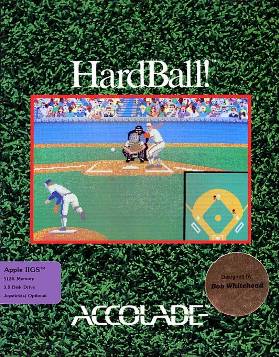
HardBall! is a baseball video game published by Accolade. Initially released for the Commodore 64 in 1985, it was ported to other computers over the next several years. A Sega Genesis cartridge was published in 1991. HardBall! was followed by sequels HardBall II, HardBall III, HardBall IV, HardBall 5, and HardBall 6.

It Came from the Desert is a 1989 action-adventure game by Cinemaware. It was originally released for the Amiga, but later ported to MS-DOS, as well as released in distinctly different forms to consoles. The TurboGrafx-16 release is distinctly different from the computer versions, in terms of gameplay and presentation. An expansion set Antheads: It Came from the Desert II was released in 1990.

Xenon 2: Megablast is a 1989 shoot 'em up video game developed by The Bitmap Brothers and published by Image Works for the Amiga and Atari ST. It was later converted to the Master System, PC-98, X68000, Mega Drive, Commodore CDTV, Game Boy, Acorn Archimedes and Atari Jaguar platforms. The game is a sequel to Xenon and takes place a millennium after the previous title. The goal of the game is to destroy a series of bombs planted throughout history by the Xenites, the vengeful antagonists of the first game.
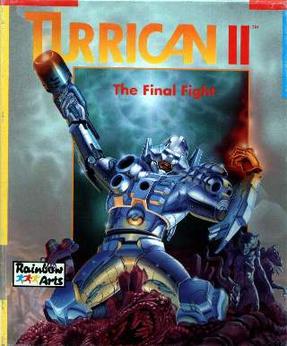
Turrican II: The Final Fight is the second game of the Turrican series. The game, developed by Factor 5 was released in 1991 for the Commodore Amiga. This version was finished before the C64 version, but Manfred Trenz cites the C64 version as the original design. Turrican II was also released for the CDTV, Atari ST, Amstrad CPC and ZX Spectrum, and later for DOS, and also for the Mega Drive/Genesis and Game Boy rebranded as Universal Soldier.

Rocket Ranger is a 1988 action-adventure game developed and published by Cinemaware. The game's setting is based in the World War II era, allowing the player to control a US Army scientist and setting out to stop Nazi Germany from winning the war. The Rocket Ranger moniker stems from the rocket pack the player uses over the course of the game.

HardBall III is a multiplatform baseball video game developed by MindSpan and published by Accolade between 1992 and 1994 for the Sega Genesis, Super Nintendo Entertainment System and DOS platforms. The game is licensed by the Major League Baseball Players Association and is the sequel to HardBall II.

Nuclear War is a single player turn-based strategy game developed by New World Computing and released for the Amiga in 1989 and later for MS-DOS. It presents a satirical, cartoonish nuclear battle between five world powers, in which the winner is whoever retains some population when everyone else on earth is dead.
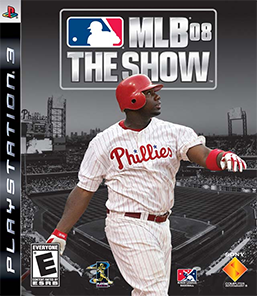
MLB 08: The Show is a baseball simulation video game developed by San Diego Studio published by Sony Computer Entertainment for the PlayStation 2, PlayStation 3, and PlayStation Portable systems. It is the longest-running officially licensed Major League Baseball game series on the PlayStation systems. MLB 08: The Show is the third edition of the MLB: The Show series of video games. The game was announced for all three PlayStation consoles on December 11, 2007, and released on March 4, 2008 in North America. Ryan Howard, all-star first baseman for the Philadelphia Phillies, is featured as the game's cover athlete.

Their Finest Hour: The Battle of Britain is a World War II combat flight simulation game by Lawrence Holland, released in October 1989 for the Amiga, Atari ST and MS-DOS systems. It was the second game in the trilogy of World War II titles by Lucasfilm Games, the others being Battlehawks 1942 (1988) and Secret Weapons of the Luftwaffe (1991). The game was released with a 192-page manual written by Victor Cross, that provided a detailed historical overview of the battle and pilots' perspectives. An expansion pack, Their Finest Missions: Volume One, was released in 1989.
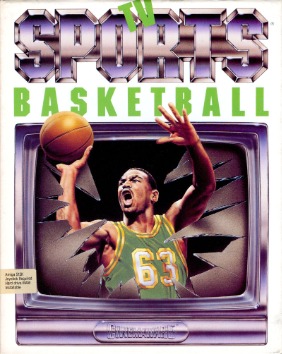
TV Sports: Basketball is a 1989 computer basketball game for the home computers. It was developed by Cinemaware and published by Mirrorsoft for the Amiga, MS-DOS, Commodore 64 and TurboGrafx-16. It is part of the TV Sports series that included TV Sports: Baseball as well as other games based on hockey and American football.

Harpoon is a computer wargame published by Three-Sixty Pacific in 1989 for DOS. This was the first game in the Harpoon series. It was ported to the Amiga and Macintosh.
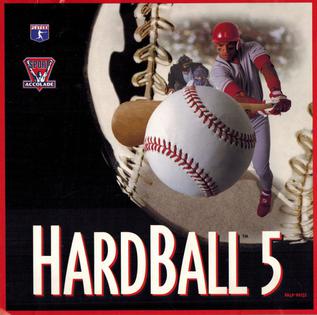
HardBall 5 is a video game developed by American studio MindSpan and published by Sport Accolade for DOS, the Sega Genesis, and the PlayStation. Al Michaels provides color commentary.

Shadow of the Beast III is a platform game developed by Reflections and published by Psygnosis in 1992, exclusively for the Amiga.

Trump Castle is a series of gambling video games published by Capstone Software between 1989 and 1993. The games are named after Trump's Castle hotel-casino in Atlantic City, New Jersey, and were released for Amiga, Atari ST, Commodore 64, Commodore 128, and MS-DOS.

HardBall 6, also known as HardBall 99 for the PlayStation version, is a baseball video game developed by MindSpan and published by Accolade for Microsoft Windows and PlayStation in 1998. A 2000 Edition was released for Windows only in 1999.
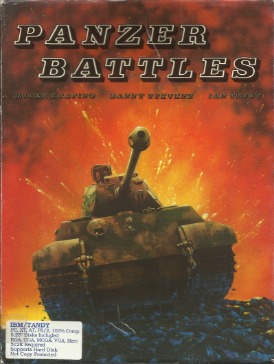
Panzer Battles is a 1989 video game published by Strategic Studies Group.




















